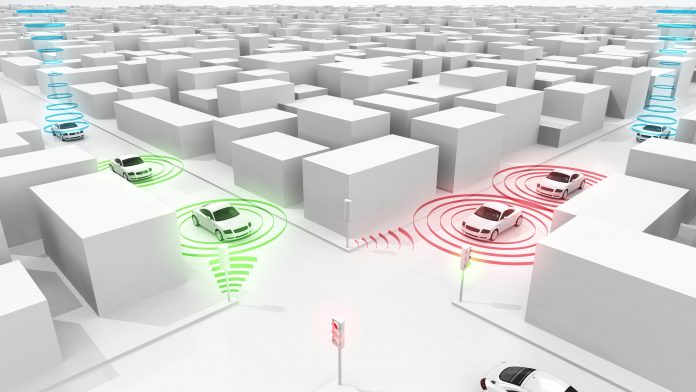
While the idea of talking cars doesn’t seem to exist outside of animated films and 70s TV shows, Toyotas of the near future may be doing a little more talking. The Japanese automaker announced this week that it plans to start designing and selling vehicles in the U.S. by 2021 that can communicate with each other via short-range wireless technology to avoid accidents.
The idea isn’t new to the automotive industry. Last year, GM began offering vehicle-to-vehicle (V2V) communication technology in its Cadillac CTS model. Toyota has been using the technology in Japan on more than 100,000 vehicles since 2015.
In 2016, the Obama administration mulled passing a rule that mandated the V2V safety technology and gave automakers four years to comply, but the Trump administration later set aside the rule from the White House Office of Management and Budget’s list of regulations actively under consideration. The order would have required vehicles to transmit their location, speed, direction and other information 10 times per second so other vehicles could sense when another vehicle is about to run a stop sign, for example, or emerge from a blind driveway.
The technology itself is nearly 20 years old. In 1999, auto manufacturers were granted a block of spectrum in the 5.9 GHz band for both V2V and “vehicle to infrastructure” communications. These vehicular ad hoc networks, or VANETs, would operate on the same unlicensed frequency used by Wi-Fi, and therein lies a competition problem between telecom companies and automakers.
Conflict over the valuable spectrum between cable and wireless companies and auto manufacturers has pitted two government agencies against each other, according to the Los Angeles Times. The FCC, which regulates spectrum, sympathizes with telecom companies, while the national traffic board, which regulates auto safety, is siding with automakers. The National Highway Traffic Safety Administration (NHTSA) has reported that while the technology will cost between $135 and $300 per new vehicle ($5 billion annually), it could prevent more than half a million crashes and reduce costs by $71 billion annually when deployed.
Toyota and its Lexus division have gotten ahead of the regulations – which may be revived in the near future — announcing the companies plan to begin deploying Dedicated Short-Range Communications (DSRC) systems on vehicles sold in the U.S. in 2021, with widespread adoption across nearly all models by the mid-2020s. The technology will work in conjunction with Toyota’s automatic emergency braking (AEB) that is now standard in nearly every new Toyota or Lexus model sold in the country.
“By allowing vehicles’ intelligent systems to collaborate more broadly and effectively through DSRC technology, we can help drivers realize a future with zero fatalities from crashes, better traffic flow and less congestion,” said Jim Lentz, CEO of Toyota Motor North America (TMNA) in a release.












